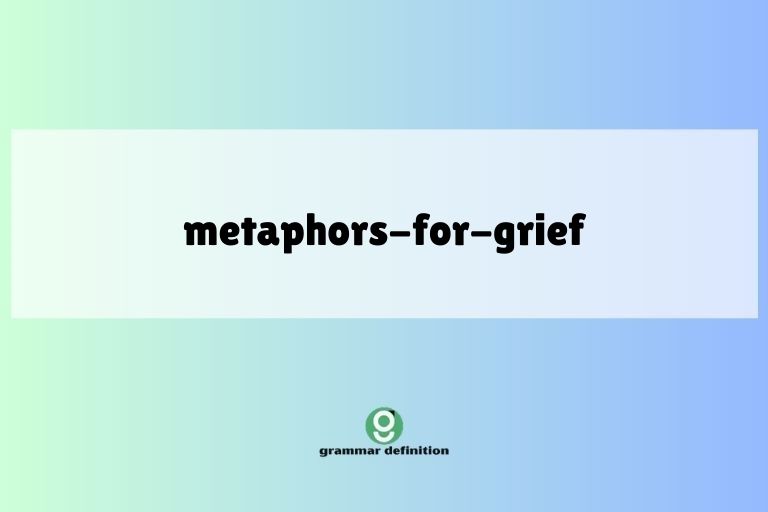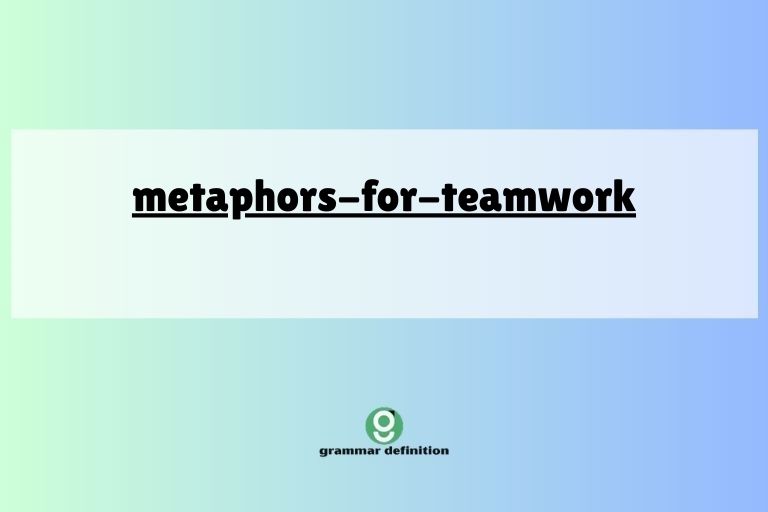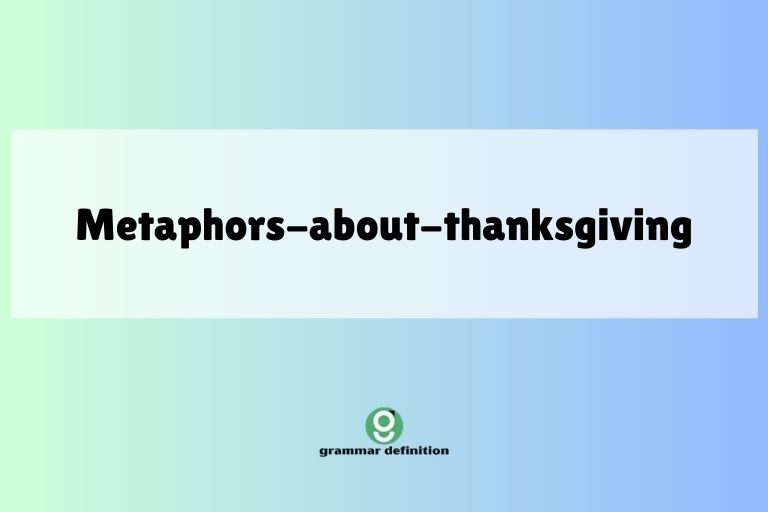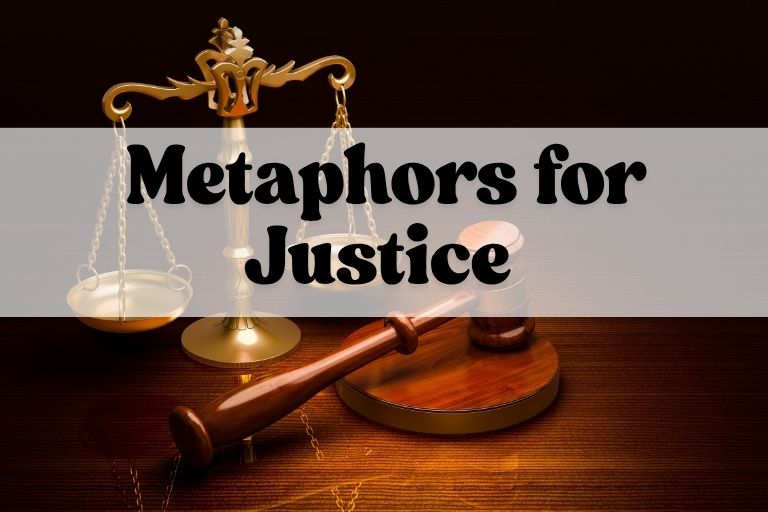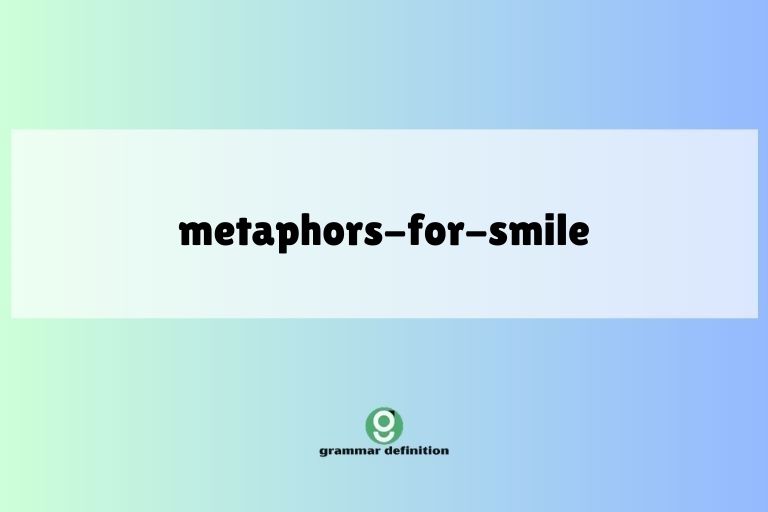Creativity’s Canvas: Exploring Metaphors for Imagination
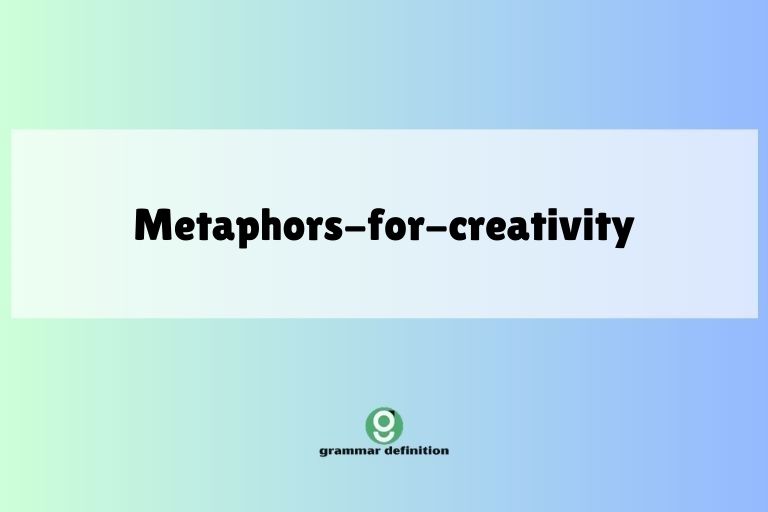
Creativity is an abstract concept, often elusive and difficult to define. To make it more tangible and understandable, we frequently turn to metaphors.
These figurative expressions allow us to conceptualize creativity as something else, drawing parallels and highlighting different facets of its nature. Understanding these metaphors can significantly enhance our appreciation for the creative process and unlock new perspectives on our own imaginative abilities.
This article will delve into the rich landscape of metaphors for creativity, exploring their meanings, applications, and the insights they offer, benefiting writers, artists, educators, and anyone seeking to foster their creative potential.
This article is designed to be a comprehensive guide, providing you with a clear understanding of how metaphors are used to describe and understand creativity. We will explore different categories of metaphors, provide numerous examples, and offer practical exercises to help you integrate these concepts into your own thinking and communication.
Whether you are a student, a professional, or simply someone interested in the power of language, this exploration of creativity’s metaphors will offer valuable insights.
Table of Contents
- Introduction
- Defining Metaphors for Creativity
- Structural Breakdown of Metaphorical Expressions
- Types of Metaphors for Creativity
- Examples of Metaphors for Creativity
- Usage Rules for Metaphors
- Common Mistakes When Using Metaphors
- Practice Exercises
- Advanced Topics in Metaphorical Analysis
- Frequently Asked Questions
- Conclusion
Defining Metaphors for Creativity
A metaphor is a figure of speech that directly compares two unlike things without using “like” or “as.” It asserts that one thing is another, attributing qualities of the second thing to the first. In the context of creativity, metaphors serve as powerful tools for understanding and communicating the often-intangible nature of imaginative thought, innovation, and artistic expression. By framing creativity in terms of more concrete or familiar concepts, we gain a deeper appreciation for its various aspects.
Metaphors for creativity function by transferring characteristics from the source domain (the concrete concept) to the target domain (creativity). For example, if we say “creativity is a seed,” the source domain is ‘seed,’ and the target domain is ‘creativity.’ We are then implying that creativity, like a seed, requires nurturing, has the potential for growth, and can blossom into something beautiful.
These metaphors can be classified based on their underlying conceptual structure. Some common classifications include: spatial metaphors (e.g., “thinking outside the box”), agent metaphors (e.g., “inspiration struck me”), and substance metaphors (e.g., “a wellspring of ideas”). The context in which a metaphor is used also plays a crucial role in shaping its meaning. A metaphor used in a scientific paper might carry different connotations than one used in a poem.
Structural Breakdown of Metaphorical Expressions
Understanding the structure of a metaphorical expression is crucial for interpreting its intended meaning. The basic structure involves two key components: the tenor (or topic) and the vehicle. The tenor is the subject to which metaphorical attributes are ascribed – in our case, creativity. The vehicle is the object or concept whose attributes are being transferred to the tenor.
Consider the metaphor “Creativity is a river.” Here, “creativity” is the tenor, and “river” is the vehicle. The metaphor implies that creativity, like a river, flows, can be powerful, can carve new paths, and can be a source of life. The ground of the metaphor is the shared characteristics between the tenor and the vehicle – the qualities that make the comparison meaningful and relevant.
The effectiveness of a metaphor depends on the strength and relevance of the ground. A strong metaphor creates a vivid and insightful connection between the tenor and the vehicle, while a weak metaphor may be confusing or uninformative.
The structure can also be more complex, involving extended metaphors that develop the comparison over several sentences or even paragraphs. These extended metaphors allow for a more nuanced and detailed exploration of the relationship between creativity and the chosen vehicle.
Types of Metaphors for Creativity
Metaphors for creativity can be categorized based on the underlying conceptual domains they draw upon. Here are some common types:
Creativity as a Journey
This metaphor frames the creative process as a voyage or expedition. It emphasizes the exploratory nature of creativity, the challenges and obstacles encountered along the way, and the potential for discovery and transformation.
This type of metaphor often uses language associated with travel, such as “path,” “road,” “destination,” and “guide.” It highlights the idea that creativity is not a linear process but rather a winding road with unexpected turns and detours. The journey metaphor can also emphasize the importance of perseverance and resilience in the face of creative blocks.
Creativity as a Force of Nature
This metaphor portrays creativity as a powerful, uncontrollable force, similar to natural phenomena like storms, volcanoes, or earthquakes. It highlights the raw, primal energy that drives creative expression and the transformative potential of imagination.
Using terms like “burst,” “surge,” “eruption,” and “tidal wave,” this metaphor captures the feeling of being swept away by inspiration. It suggests that creativity is not something that can be easily controlled or contained but rather a force that must be channeled and directed.
This metaphor can be particularly useful for describing moments of intense creative insight or breakthrough.
Creativity as a Process
This metaphor focuses on the step-by-step nature of creativity, emphasizing the various stages involved in bringing an idea to fruition. It highlights the importance of planning, experimentation, and refinement in the creative process.
Language associated with manufacturing, building, or cooking is often used in this metaphor. Terms like “blueprint,” “recipe,” “assembly,” and “ingredients” suggest that creativity is a systematic process that can be broken down into smaller, manageable steps.
This metaphor can be helpful for demystifying the creative process and making it feel more accessible.
Creativity as a Container
This metaphor views the mind as a vessel or space that can hold, generate, and release creative ideas. It emphasizes the importance of cultivating a receptive and open mindset, as well as the need to manage and organize the flow of ideas.
Words like “box,” “well,” “reservoir,” and “channel” are commonly used in this metaphor. It highlights the idea that creativity requires both storage and release – a place to gather ideas and a means to express them.
This metaphor can be useful for understanding the role of memory, experience, and environment in shaping creative thought.
Creativity as Light
This metaphor associates creativity with illumination, insight, and clarity. It emphasizes the power of creativity to shed light on new perspectives, reveal hidden truths, and inspire understanding.
Terms such as “spark,” “shine,” “illuminate,” and “beacon” are often used in this metaphor. It suggests that creativity can dispel darkness, overcome ignorance, and bring hope and inspiration.
This metaphor can be particularly powerful for describing the transformative impact of art and innovation on society.
Examples of Metaphors for Creativity
To further illustrate the different types of metaphors for creativity, here are some specific examples, organized by category.
Journey Metaphor Examples
The following table shows examples where creativity is described as a journey. This type of metaphor emphasizes the exploratory nature of creative endeavors, highlighting challenges, discoveries, and the transformative potential inherent in the process.
| Metaphor | Explanation |
|---|---|
| “Creativity is a winding road, full of unexpected turns.” | This suggests that the creative process is not always straightforward and may involve unforeseen obstacles and diversions. |
| “The artist embarked on a creative journey, seeking new horizons.” | This implies that the artist is actively exploring new ideas and perspectives, venturing into uncharted territory. |
| “Innovation is a path less traveled, requiring courage and resilience.” | This emphasizes the challenges of breaking new ground and the need for determination in the face of adversity. |
| “He navigated the labyrinth of his imagination, searching for inspiration.” | This portrays the creative process as a complex and intricate exploration of one’s inner world. |
| “The creative process is a pilgrimage to the source of inspiration.” | This suggests that creativity is a sacred quest, a journey to find the wellspring of imaginative thought. |
| “She followed the thread of her idea, unraveling its mysteries.” | This evokes the image of following a trail of clues, gradually uncovering the hidden aspects of an idea. |
| “The writer mapped out his story, charting a course through the narrative.” | This implies a deliberate and strategic approach to creative writing, with a clear sense of direction. |
| “Creativity is a voyage of discovery, uncovering new possibilities.” | This emphasizes the potential for uncovering hidden talents and unforeseen opportunities through creative exploration. |
| “The musician wandered through the landscape of sound, seeking new melodies.” | This portrays the creative process as an immersive exploration of sensory experience. |
| “He scaled the mountain of his ambition, striving for creative excellence.” | This emphasizes the effort and determination required to achieve creative goals. |
| “The inventor blazed a trail with his innovative designs, leaving a legacy for others to follow.” | This highlights the pioneering aspect of creativity, creating new pathways for future innovators. |
| “Her creative process was a long and arduous trek through the desert of doubt, but she eventually found her oasis of inspiration.” | This emphasizes the challenges and perseverance required to overcome creative blocks and find inspiration. |
| “The artist’s journey into abstraction was a leap into the unknown, a daring expedition into the realm of pure form.” | This highlights the experimental and adventurous nature of pushing creative boundaries. |
| “The filmmaker’s journey through the script was a process of constant refinement, trimming away the excess and honing the core message.” | This emphasizes the iterative nature of the creative process, involving continuous improvement and refinement. |
| “The entrepreneur’s journey of bringing her startup to life was filled with twists and turns, but her vision kept her on course.” | This highlights the challenges and resilience required to bring a creative project to fruition. |
| “The dancer’s creative journey was a continuous exploration of movement, pushing the boundaries of physical expression.” | This emphasizes the ongoing nature of creative development and the constant pursuit of new forms of expression. |
| “The architect’s journey to design a sustainable building was a quest for harmony between nature and human innovation.” | This highlights the ethical and environmental considerations that can drive creative endeavors. |
| “His creative process felt like navigating a dense forest, with each new idea a potential clearing in the trees.” | This illustrates the feeling of uncertainty and exploration that can accompany the creative process. |
| “The designer saw her creative endeavor as a climb, each challenge a new foothold on the path to success.” | This emphasizes the progressive nature of creative work, with each accomplishment building upon the last. |
| “The author’s writing process was a deep dive into the characters’ lives, exploring their motivations and hidden desires.” | This highlights the immersive and empathetic nature of creative writing. |
| “The composer’s journey to create a symphony was a quest to capture the essence of human emotion in music.” | This emphasizes the expressive power of creativity and its ability to convey profound feelings. |
| “The sculptor’s creative journey was a process of uncovering the hidden form within the stone, revealing its inherent beauty.” | This highlights the transformative aspect of creativity, bringing forth something new from existing materials. |
| “The playwright’s journey through the script was a process of weaving together different voices and perspectives into a cohesive narrative.” | This emphasizes the collaborative and integrative nature of creative storytelling. |
| “The artist’s creative journey was a pilgrimage to the source of inspiration, a quest for the divine spark that ignites the imagination.” | This highlights the spiritual and transcendent aspects of creativity. |
Force of Nature Metaphor Examples
The table below provides examples of creativity described as a force of nature. These metaphors underscore the raw power and uncontrollable aspects of creative inspiration, often comparing it to elements like storms, volcanoes, or floods.
| Metaphor | Explanation |
|---|---|
| “Creativity is a tidal wave, sweeping away old ideas.” | This suggests that creativity can be a powerful force that disrupts existing norms and conventions. |
| “Inspiration struck him like a lightning bolt, igniting his imagination.” | This implies that inspiration can be sudden and overwhelming, sparking a burst of creative energy. |
| “Her ideas flowed like a river, carving new paths through her mind.” | This portrays creativity as a fluid and dynamic process, constantly shaping and reshaping thoughts. |
| “His passion for innovation was a volcano, erupting with new ideas.” | This emphasizes the intense energy and drive that can fuel creative expression. |
| “Creativity is a wildfire, spreading rapidly and transforming everything it touches.” | This suggests that creativity can be contagious and have a far-reaching impact. |
| “The artist’s vision was a storm, brewing with intensity and unleashing a torrent of creativity.” | This portrays the creative process as a period of intense preparation followed by a powerful release of energy. |
| “His imagination was a geyser, spouting forth with unexpected bursts of inspiration.” | This implies that creative ideas can emerge spontaneously and unpredictably. |
| “Creativity is a whirlwind, pulling together disparate elements and creating something new.” | This suggests that creativity can synthesize diverse influences into a unified whole. |
| “The musician’s performance was an earthquake, shaking the foundations of the concert hall.” | This emphasizes the transformative and impactful nature of creative expression. |
| “Her creative energy was a sun, radiating warmth and illuminating new possibilities.” | This portrays creativity as a source of light, inspiration, and positive energy. |
| “The writer’s words were a hurricane, tearing through the reader’s emotions and leaving a lasting impact.” | This highlights the powerful and transformative effect of creative writing on the audience. |
| “His creative spirit was an untamed river, rushing through the landscape of his mind, carving out new paths and shaping the terrain.” | This emphasizes the unstoppable and transformative nature of creative energy. |
| “Her imagination was a volcanic eruption, spewing forth a torrent of ideas that reshaped the landscape of her art.” | This portrays the creative process as an explosive release of pent-up energy and inspiration. |
| “The artist’s creativity was a force of nature, like a relentless rain that nourishes the seeds of innovation and brings forth a vibrant harvest of new ideas.” | This highlights the nurturing and life-giving qualities of creative energy. |
| “His creative process was a whirlwind of inspiration, sweeping him off his feet and carrying him to new heights of artistic expression.” | This emphasizes the exhilarating and transformative experience of being caught up in the creative flow. |
| “The designer’s creativity was a tidal wave of innovation, washing away old paradigms and ushering in a new era of design.” | This highlights the disruptive and transformative power of creative breakthroughs. |
| “Her creative energy was like a sun, radiating warmth and light, illuminating the path for others to follow and inspiring them to pursue their own creative passions.” | This emphasizes the inspirational and guiding qualities of creative leadership. |
| “His imagination was a boundless ocean, teeming with unexplored depths and hidden treasures of creative potential.” | This portrays the creative mind as a vast and unexplored territory full of possibilities. |
| “The composer’s music was a symphony of emotions, a powerful and moving force that resonated deeply within the hearts of the listeners.” | This highlights the emotional impact and expressive power of creative art. |
| “The writer’s words were a storm of ideas, a tempest of thoughts that challenged conventional wisdom and sparked new conversations.” | This emphasizes the intellectual and thought-provoking nature of creative writing. |
| “The artist’s brushstrokes were like gusts of wind, swirling across the canvas and creating a dynamic and vibrant composition.” | This highlights the expressive and energetic qualities of artistic technique. |
| “The dancer’s movements were a dance of fire, a passionate and energetic display of creative expression that captivated the audience.” | This emphasizes the dynamic and captivating nature of creative performance. |
| “The inventor’s mind was a crucible of innovation, where ideas were forged in the fires of experimentation and transformed into groundbreaking inventions.” | This highlights the transformative and experimental nature of creative problem-solving. |
| “The architect’s designs were like mountains, standing tall and proud, monuments to human ingenuity and creative vision.” | This emphasizes the enduring and monumental qualities of creative architecture. |
Process Metaphor Examples
The following table illustrates creativity described as a process. These metaphors emphasize the step-by-step, systematic nature of creative work, often drawing comparisons to manufacturing, building, or cooking.
| Metaphor | Explanation |
|---|---|
| “Creativity is a recipe, requiring the right ingredients and careful preparation.” | This suggests that creativity involves a specific set of elements and a structured approach. |
| “The artist constructed his painting layer by layer, building up the image.” | This implies that creative work is a gradual process of adding and refining elements. |
| “Innovation is an assembly line, with each step contributing to the final product.” | This emphasizes the importance of collaboration and sequential development in creative projects. |
| “Her ideas were like building blocks, forming a solid foundation for her project.” | This portrays creative thought as a process of constructing a coherent structure. |
| “Creativity is a refining process, removing impurities to reveal the true essence.” | This suggests that creative work involves identifying and eliminating distractions or flaws. |
| “The writer crafted his story carefully, weaving together plot, character, and theme.” | This emphasizes the meticulous and deliberate nature of creative writing. |
| “His design process was a blueprint, guiding him through each stage of development.” | This implies that creative projects benefit from a clear plan and structure. |
| “Creativity is a fermentation process, allowing ideas to develop and mature over time.” | This suggests that creative thought requires patience and time for incubation. |
| “The musician sculpted his melody, shaping and refining it until it was perfect.” | This portrays creative composition as a process of molding and perfecting sound. |
| “Her creative process was a dance, a rhythmic interplay of inspiration and execution.” | This emphasizes the dynamic and interactive nature of creative work. |
| “The software development was a process of coding, testing, and debugging, until the application was ready.” | This highlights the iterative nature of refining a software application. |
| “The creative process is a process of cultivation, like tending to a garden, nurturing ideas until they blossom.” | This emphasizes the importance of attention and care in fostering creative growth. |
| “The designer’s process of product development was an iterative cycle of prototyping, testing, and refining, ensuring that the final product met the needs of the user.” | This emphasizes the importance of user feedback and continuous improvement in creative design. |
| “Her creative process was a deliberate act of construction, carefully assembling her ideas like a master builder constructing a cathedral.” | This suggests that creativity can be a deliberate and methodical process. |
| “The creation process felt like solving a puzzle, with each piece of information carefully placed to create a complete picture.” | This highlights the problem-solving aspect of creativity. |
| “The creative process in writing a novel is like weaving a tapestry, with different threads of plot, character, and theme intertwined to create a rich and complex narrative.” | This emphasizes the intricate and interconnected nature of creative storytelling. |
| “The entrepreneur’s creative process of building a business was like constructing a building, with each department serving as a pillar to support the whole structure.” | This highlights the collaborative and structural aspects of creative entrepreneurship. |
| “The chef’s creative process of creating a new dish was like conducting an experiment, carefully combining flavors and textures to create a unique culinary experience.” | This emphasizes the experimental and sensory aspects of creative cooking. |
| “The musician’s process of composing a song was like building a bridge, connecting different musical ideas and emotions to create a harmonious whole.” | This highlights the unifying and connective power of creative music. |
| “The artist’s creative process of painting a portrait was like capturing a soul, carefully observing and interpreting the subject’s inner essence.” | This emphasizes the observational and interpretive aspects of creative portraiture. |
| “The scientist’s creative process of developing a new theory was like piecing together a jigsaw puzzle, carefully analyzing and synthesizing data to reveal the underlying truth.” | This highlights the analytical and synthetic aspects of creative scientific inquiry. |
| “The architect’s creative process of designing a building was like composing a symphony, carefully arranging different elements of form and function to create a harmonious whole.” | This emphasizes the holistic and integrative aspects of creative architecture. |
| “The dancer’s creative process of choreographing a routine was like writing a poem, carefully crafting movements and gestures to express emotions and ideas.” | This highlights the expressive and communicative aspects of creative dance. |
| “The filmmaker’s creative process of making a movie was like conducting an orchestra, carefully coordinating different elements of sound, image, and performance to create a cohesive and compelling narrative.” | This emphasizes the collaborative and integrative aspects of creative filmmaking. |
Container Metaphor Examples
The table below presents examples of creativity described as a container. These metaphors view the mind as a space that can hold, generate, and release ideas, emphasizing the importance of openness and organization.
| Metaphor | Explanation |
|---|---|
| “Her mind was a treasure chest, filled with brilliant ideas.” | This suggests that the mind is a repository of valuable creative thoughts. |
| “He drew inspiration from the wellspring of his imagination.” | This implies that the mind is a source of endless creative potential. |
| “Creativity is a box, waiting to be opened and explored.” | This emphasizes the potential for discovery and surprise within the creative process. |
| “Her mind was a fertile ground, ready to cultivate new ideas.” | This portrays the mind as a receptive environment for creative growth. |
| “Creativity is a channel, through which ideas flow freely.” | This suggests that the mind facilitates the expression of creative thoughts. |
| “The artist poured his emotions into his painting, filling it with feeling.” | This emphasizes the role of emotion in creative expression. |
| “His mind was a library, filled with knowledge and inspiration.” | This portrays the mind as a vast storehouse of information and ideas. |
| “Creativity is a vessel, waiting to be filled with experience and imagination.” | This suggests that the mind needs to be nurtured and enriched to foster creative growth. |
| “The musician emptied his mind, creating space for new melodies to emerge.” | This emphasizes the importance of clearing mental clutter to allow for inspiration. |
| “Her mind was a canvas, ready to be painted with new ideas.” | This portrays the mind as a blank slate, open to creative expression. |
| “The artist’s mind was a kaleidoscope, filled with colors and shapes.” | This emphasizes the vibrant and dynamic nature of creative thought. |
| “His imagination was a deep ocean, full of unexplored wonders and hidden treasures.” | This portrays the mind as a vast and mysterious realm of creative potential. |
| “The writer’s mind was a garden, where ideas sprouted, grew, and blossomed into stories.” | This emphasizes the nurturing and organic nature of creative writing. |
| “Her mind was a laboratory, where she experimented with different ideas and concocted new creations.” | This portrays the mind as a space for experimentation and innovation. |
| “His mind was a crucible, where diverse influences were melted down and forged into something new and unique.” | This emphasizes the transformative and synthesizing power of creative thought. |
| “The designer’s mind was a studio, where she crafted and refined her designs until they were perfect.” | This portrays the mind as a space for skillful and meticulous creative work. |
| “Her mind was a theater, where characters came to life and stories unfolded on the stage of her imagination.” | This emphasizes the dramatic and immersive nature of creative storytelling. |
| “His mind was a museum, filled with artifacts of experience and inspiration that informed his creative vision.” | This portrays the mind as a repository of knowledge and inspiration gathered over time. |
| “The musician’s mind was a concert hall, where melodies resonated and harmonies intertwined to create a symphony of sound.” | This emphasizes the harmonious and expressive nature of creative music. |
| “The inventor’s mind was a workshop, where he tinkered with different ideas and built prototypes of his inventions.” | This portrays the mind as a space for hands-on creative problem-solving. |
| “The architect’s mind was a drafting board, where he sketched and refined his designs for buildings that would shape the cityscape.” | This emphasizes the planning and structural aspects of creative architecture. |
| “The dancer’s mind was a stage, where movements and gestures were choreographed to express emotions and ideas.” | This highlights the expressive and communicative aspects of creative dance. |
| “The filmmaker’s mind was a camera, capturing images and stories and weaving them together into a compelling narrative.” | This emphasizes the observational and storytelling aspects of creative filmmaking. |
| “The scientist’s mind was a telescope, peering into the vastness of the universe and uncovering new truths about the natural world.” | This highlights the exploratory and investigative aspects of creative scientific inquiry. |
Light Metaphor Examples
The following table showcases creativity described as light. These metaphors associate creativity with illumination, insight, and clarity, emphasizing its power to reveal new perspectives and inspire understanding.
| Metaphor | Explanation |
|---|---|
| “Creativity is a spark, igniting new ideas and innovations.” | This suggests that creativity can be the catalyst for significant breakthroughs. |
| “Her insights shone like a beacon, guiding others towards understanding.” | This implies that creativity can provide clarity and direction. |
| “Innovation is a light, illuminating new possibilities and pathways.” | This emphasizes the potential for creativity to open up new opportunities. |
| “His ideas were like stars, twinkling in the darkness of ignorance.” | This portrays creative thought as a source of knowledge and enlightenment. |
| “Creativity is a flame, burning brightly and inspiring others.” | This suggests that creativity can be a powerful and contagious force. |
| “The artist’s vision was a sunrise, bringing hope and inspiration to the world.” | This emphasizes the transformative and uplifting nature of creative expression. |
| “His mind was a spotlight, focusing on the essential elements of the problem.” | This implies that creativity can help to clarify and simplify complex issues. |
| “Creativity is a lens, allowing us to see the world in new ways.” | This suggests that creativity can broaden our perspective and understanding. |
| “The musician’s melody was a ray of sunshine, bringing joy and warmth to the audience.” | This emphasizes the emotional impact of creative music. |
| “Her creative process was a searchlight, uncovering hidden truths and insights.” | This portrays creativity as a means of exploration and discovery. |
| “The inventor’s idea was a flash of insight, illuminating a new path forward.” | This highlights the sudden and revelatory nature of creative breakthroughs. |
| “Creativity is a guiding star, leading us towards a brighter future.” | This emphasizes the aspirational and transformative power of creative vision. |
| “The artist’s work was a beacon of hope, shining brightly in a world of darkness.” | This highlights the positive and inspiring impact of creative expression. |
| “Her ideas were sparks of genius, igniting a revolution of thought and innovation.” | This portrays creative thought as a catalyst for transformative change. |
| “His creativity was like a spotlight, illuminating the hidden beauty in everyday things.” | This emphasizes the ability of creativity to reveal the extraordinary in the ordinary. |
| “Her creative vision was a lighthouse, guiding others through the fog of uncertainty and confusion.” | This highlights the guiding and clarifying power of creative leadership. |
| “His ideas were like rays of sunshine, warming the hearts and minds of those who encountered them.” | This emphasizes the positive and uplifting impact of creative thought. |
| “Her creativity was a source of illumination, shedding light on new perspectives and possibilities.” | This highlights the enlightening and transformative nature of creative insight. |
| “His mind was like a prism, refracting light into a spectrum of brilliant ideas.” | This portrays the mind as a source of diverse and multifaceted creative thought. |
| “Her creative process was like a lantern, guiding her through the darkness of doubt and uncertainty.” | This emphasizes the guiding and supportive role of creativity in overcoming challenges. |
| “His ideas were like fireflies, twinkling in the night sky and illuminating the path to innovation.” | This portrays creative thought as a source of wonder and inspiration. |
| “Her creativity was like a sunrise, painting the world with vibrant colors and filling it with hope.” | This emphasizes the transformative and inspiring power of creative expression. |
| “His mind was like a mirror, reflecting the light of inspiration and amplifying its brilliance.” | This portrays the mind as a receptive and amplifying source of creative energy. |
| “Her creative process was like a star, shining brightly and guiding her towards her artistic goals.” | This emphasizes the guiding and aspirational nature of creative vision. |
Usage Rules for Metaphors
While metaphors can significantly enrich communication, it’s crucial to use them thoughtfully and effectively
, ensuring they enhance understanding rather than create confusion. Here are some key rules to follow:
- Clarity is Key: The primary goal of a metaphor is to illuminate a concept. If the metaphor obscures rather than clarifies, it’s not effective. Choose metaphors that are easily understood by your audience.
- Relevance Matters: The connection between the tenor and the vehicle should be clear and relevant. The shared characteristics (the ground) should be strong enough to justify the comparison.
- Avoid Clichés: Overused metaphors can lose their impact and become trite. Strive for originality and freshness in your metaphorical expressions.
- Consistency is Important: If you’re using an extended metaphor, maintain consistency throughout. Avoid introducing conflicting images or ideas that disrupt the comparison.
- Know Your Audience: Consider your audience’s background, knowledge, and cultural context when choosing metaphors. What resonates with one audience may not resonate with another.
- Context is Crucial: The meaning of a metaphor can change depending on the context in which it’s used. Be mindful of the surrounding text and the overall message you’re trying to convey.
- Don’t Overdo It: While metaphors can be powerful, using too many in close proximity can overwhelm your audience and detract from your message. Use them judiciously and strategically.
- Test Your Metaphors: Before using a metaphor in a formal setting, test it out on a small group to see if it’s clear and effective. Ask for feedback and be willing to revise if necessary.
Common Mistakes When Using Metaphors
Using metaphors effectively requires careful attention and awareness. Here are some common mistakes to avoid:
- Mixed Metaphors: Combining two or more incompatible metaphors can create confusion and undermine your message. For example, “We need to nip it in the bud before it snowballs.” is a mixed metaphor, combining the image of stopping something small from growing (bud) with the image of something growing uncontrollably (snowball). A better alternative would be: “We need to address the issue immediately before it escalates.”
- Overused Clichés: Relying on tired, overused metaphors can make your writing sound unoriginal and uninspired. Instead of saying “thinking outside the box,” try a fresh alternative like “exploring unconventional solutions” or “challenging established assumptions.”
- Unclear Connections: If the relationship between the tenor and the vehicle is too vague or obscure, your audience may not understand the intended meaning. Ensure the shared characteristics are evident and relevant.
- Inappropriate Tone: Using a metaphor that is inconsistent with the overall tone of your writing can be jarring and disruptive. Choose metaphors that align with the mood and style of your message.
- Literal Interpretation: Some audience members may interpret your metaphor literally, leading to misunderstanding. Be prepared to clarify your intended meaning if necessary.
- Ignoring Cultural Context: Metaphors are often culturally specific, and what resonates in one culture may not resonate in another. Be sensitive to cultural differences and avoid using metaphors that may be offensive or confusing.
- Forcing a Metaphor: Trying to force a metaphor into a situation where it doesn’t naturally fit can make your writing sound awkward and contrived. Only use metaphors when they genuinely enhance understanding and add value to your message.
Practice Exercises
To improve your understanding and use of metaphors for creativity, try these exercises:
- Metaphor Identification: Read a passage of text and identify any metaphors related to creativity. Analyze the tenor, vehicle, and ground of each metaphor.
- Metaphor Generation: Choose a specific aspect of creativity (e.g., brainstorming, problem-solving, inspiration) and generate three different metaphors to describe it. Explain the meaning and implications of each metaphor.
- Metaphor Evaluation: Evaluate the effectiveness of a given metaphor for creativity. Consider its clarity, relevance, originality, and appropriateness for the intended audience.
- Metaphor Transformation: Take an overused cliché related to creativity (e.g., “thinking outside the box”) and transform it into a fresh and original metaphor.
- Metaphor Application: Write a short paragraph about your own creative process, using at least three different metaphors to describe your experiences and insights.
Exercise 1: Identify the Metaphor
Read the following sentence and identify the metaphor used for creativity:
“Her creativity was a boundless ocean, full of unexplored wonders and hidden treasures.”
What is the tenor, vehicle, and ground of this metaphor?
Answer: Tenor: Creativity, Vehicle: Boundless Ocean, Ground: Limitless potential, unexplored depths, hidden value.
Exercise 2: Generate a Metaphor
Come up with a metaphor for “Inspiration.” Explain why you chose this metaphor.
Answer: Example: Inspiration is a gentle breeze, carrying seeds of ideas to fertile minds. Explanation: This metaphor suggests that inspiration is subtle but powerful, capable of spreading ideas and fostering growth.
Advanced Topics in Metaphorical Analysis
For those interested in delving deeper into the study of metaphors for creativity, here are some advanced topics to explore:
- Conceptual Metaphor Theory: This theory, developed by George Lakoff and Mark Johnson, argues that metaphors are not just linguistic devices but fundamental structures of thought that shape our understanding of the world.
- Metaphorical Framing: This refers to the use of metaphors to influence how people perceive and interpret events, issues, or ideas. Explore how metaphorical framing can be used to promote creativity and innovation.
- Cross-Cultural Metaphors: Investigate how metaphors for creativity vary across different cultures and languages. Consider the cultural values and beliefs that shape these metaphors.
- Metaphor and Cognition: Explore the cognitive processes involved in understanding and processing metaphors. How do metaphors activate different regions of the brain and influence our thinking?
- The Role of Metaphor in Creative Problem-Solving: Examine how metaphors can be used as a tool for generating new ideas and solving complex problems.
Frequently Asked Questions
What is the difference between a metaphor and a simile?
A metaphor directly compares two things by stating that one thing is another, while a simile uses “like” or “as” to make a comparison. For example, “Creativity is a river” is a metaphor, while “Creativity is like a river” is a simile.
Why are metaphors useful for understanding creativity?
Metaphors help us understand abstract concepts like creativity by framing them in terms of more concrete and familiar concepts. This allows us to grasp different facets of creativity and gain new insights into its nature.
How can I improve my use of metaphors?
Practice identifying and analyzing metaphors in different contexts. Experiment with generating your own metaphors and seek feedback from others.
Pay attention to the clarity, relevance, and originality of your metaphors.
Are some metaphors for creativity better than others?
The effectiveness of a metaphor depends on its clarity, relevance, originality, and appropriateness for the intended audience. A strong metaphor creates a vivid and insightful connection between the tenor and the vehicle, while a weak metaphor may be confusing or uninformative.
Conclusion
Metaphors are powerful tools for understanding and communicating the multifaceted nature of creativity. By framing creativity in terms of familiar concepts like journeys, forces of nature, processes, containers, and light, we can gain new insights into its various aspects and unlock our own creative potential.
By understanding the structure of metaphors, avoiding common mistakes, and practicing their use, we can harness the power of figurative language to enrich our thinking, writing, and communication. Embrace the rich landscape of metaphors for creativity, and let your imagination soar.

